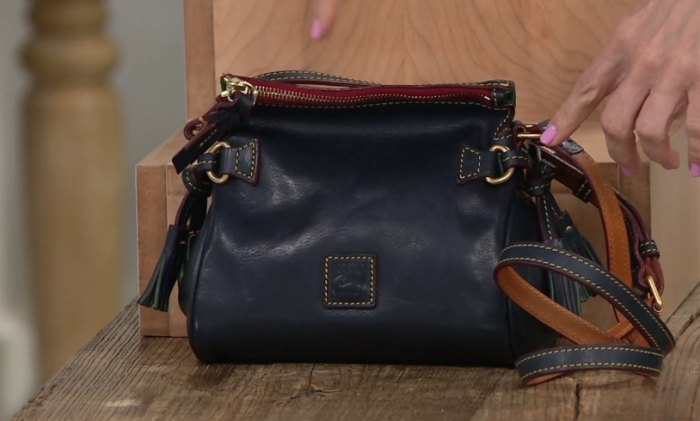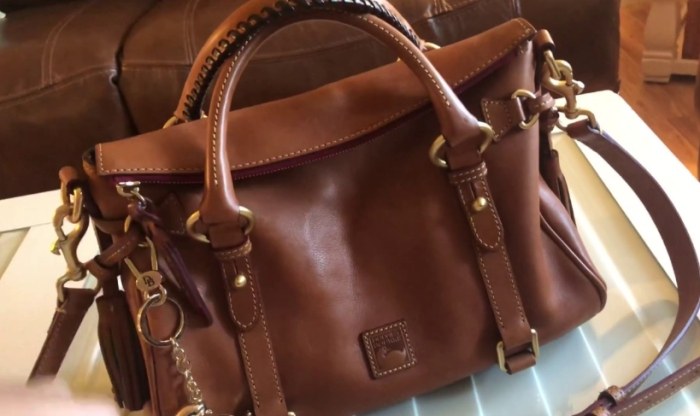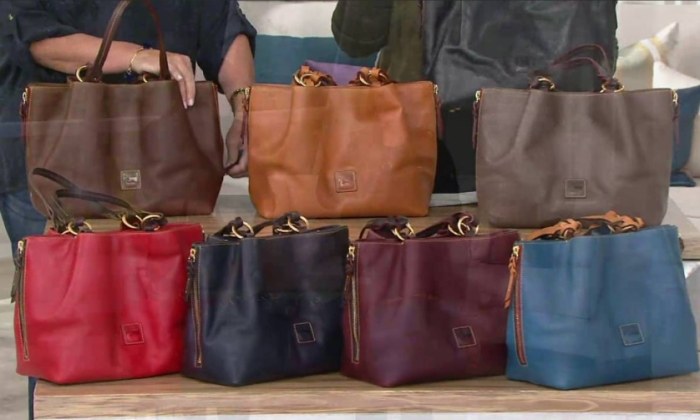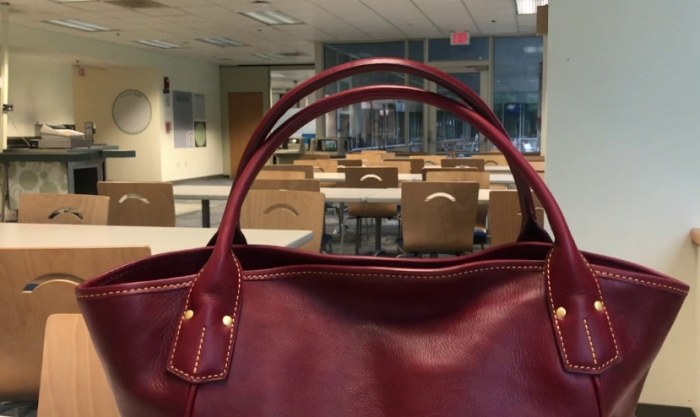Florentine Leather Guide: Where to Find Authentic Italian Bags, Jackets & More
Want authentic Florentine leather goods? Discover Florence's finest leather workshops, handcrafted bags, jackets & accessories in 2025 - where to buy, how to spot quality & best markets for genuine Italian leather.
Table of Contents
As a proud resident of Florence, the birthplace of the Renaissance and a city steeped in art, culture, and craftsmanship, I am often asked about one of our most treasured exports: Florentine leather. For centuries, our city has been synonymous with the finest leather goods, crafted by skilled artisans who have passed down their techniques through generations. In this comprehensive guide, I will take you through the history, craftsmanship, shopping experiences, and unique aspects of Florentine leather, all from the perspective of someone who has witnessed its evolution firsthand.
History of Florentine Leather

Origins and Early Development
Florentine leather's story begins in the Middle Ages, when Florence emerged as a major center for trade and commerce. The city's strategic location along key trade routes allowed it to import raw hides from across Europe and North Africa. Early artisans in Florence quickly realized the potential of these materials and began experimenting with tanning and finishing techniques to create leather of exceptional quality.
By the 13th century, Florence had established itself as a leader in leather production. The city's guilds, which regulated various trades, played a crucial role in maintaining high standards of craftsmanship. Leatherworkers, known as "pellicciai," were organized into a guild that ensured members adhered to strict quality controls and ethical practices.
Renaissance Influence
The Renaissance period marked a golden age for Florentine leather. As the city became a hub of artistic and intellectual activity, leather goods were no longer just practical items but also symbols of status and refinement. Wealthy merchants, nobles, and even the Medici family commissioned leather-bound books, ornate saddles, and luxurious clothing adorned with intricate embossing and gold leaf.
Artists like Leonardo da Vinci and Michelangelo, who spent time in Florence, also had a hand in shaping the aesthetic of Florentine leather. Their attention to detail and appreciation for beauty inspired leatherworkers to push the boundaries of their craft, creating pieces that were both functional and works of art.
Modern-Day Legacy
Today, Florentine leather continues to be a source of pride for the city. While modern technology has streamlined some aspects of production, the core techniques and traditions remain largely unchanged. Many of the workshops that have been in operation for centuries are still run by families who are committed to preserving the legacy of Florentine leather.
The industry has also adapted to contemporary tastes, offering a wide range of products that cater to both traditional and modern consumers. From classic handbags and wallets to innovative accessories and home decor items, Florentine leather continues to be a symbol of luxury and quality around the world.
Core Craftsmanship of Florentine Leather

Tanning Process
The tanning process is the foundation of Florentine leather's exceptional quality. It begins with the selection of high-quality raw hides, typically from cows, sheep, or goats. The hides are then soaked in a series of solutions to remove hair, flesh, and impurities.
In Florence, the traditional tanning method involves the use of vegetable tannins derived from trees such as oak, chestnut, and mimosa. This natural tanning process can take several weeks or even months, resulting in leather that is durable, flexible, and has a unique, earthy aroma. Vegetable-tanned leather is also known for its ability to develop a beautiful patina over time, which adds to its charm and character.
Finishing Techniques
Once the leather has been tanned, it undergoes a variety of finishing techniques to enhance its appearance and texture. One of the most iconic finishing methods is "antique finishing," which involves applying a layer of dye or wax to the leather and then buffing it to create a distressed, vintage look. This technique gives the leather a sense of history and authenticity, making each piece truly unique.
Another popular finishing technique is "embossing," where patterns or designs are pressed into the leather using heated metal plates. This can range from simple geometric shapes to intricate floral motifs or even custom designs. Embossing not only adds visual interest but also provides a tactile element that enhances the overall experience of the leather.
Handcrafting and Artisanal Skills
What truly sets Florentine leather apart is the skill and dedication of the artisans who craft each piece by hand. From cutting the leather to stitching the seams, every step of the process is done with precision and care. Many artisans in Florence have spent decades perfecting their craft, learning from master craftsmen before them and passing on their knowledge to the next generation.
One of the hallmarks of Florentine leatherwork is the use of traditional stitching techniques, such as saddle stitching. This method involves hand-sewing the leather with two needles, creating a strong and durable seam that is less likely to unravel over time. The attention to detail and the commitment to quality are evident in every stitch, making Florentine leather goods a testament to the art of handcraftsmanship.
Shopping Guide for Florentine Leather

Where to Shop
Florence is home to numerous shops and boutiques that specialize in Florentine leather goods. Here are some of the best places to find authentic, high-quality pieces:
The Oltrarno District
The Oltrarno district, located across the Arno River from the historic center, is known for its artisan workshops and boutiques. This area is a haven for leather lovers, with many shops offering custom-made items and the opportunity to watch artisans at work. Some notable shops in the Oltrarno include Scuola del Cuoio, a leather school and workshop that produces beautiful leather goods, and Il Bisonte, a brand known for its minimalist and functional designs.
The Ponte Vecchio
The Ponte Vecchio, Florence's iconic bridge lined with jewelry and leather shops, is another popular destination for leather shopping. While some of the shops on the bridge may cater more to tourists, there are still a few hidden gems where you can find authentic Florentine leather goods at reasonable prices. Be sure to look for shops that display the "Artigiano in Firenze" (Artisan in Florence) logo, which indicates that the products are made by local artisans.
The San Lorenzo Market
For a more budget-friendly option, the San Lorenzo Market is a great place to browse for leather goods. This open-air market offers a wide variety of leather items, from handbags and wallets to belts and jackets. While you may need to do some bargaining and be cautious of counterfeit products, you can still find some great deals on genuine Florentine leather.
What to Look For
When shopping for Florentine leather goods, there are a few key things to look for to ensure you're getting a high-quality product:
Quality of Leather
The quality of the leather is the most important factor to consider. Look for leather that is thick, supple, and has a natural grain. Vegetable-tanned leather is a good indicator of quality, as it is more durable and has a unique character compared to chemically-tanned leather.
Stitching and Construction
Check the stitching on the leather goods to ensure it is even, tight, and free of loose threads. Saddle stitching is a sign of high-quality craftsmanship, as it is more durable than machine stitching. Also, examine the construction of the item, such as the seams, edges, and hardware, to make sure everything is well-made and secure.
Authenticity and Origin
Make sure the leather goods are made in Florence or Italy. Look for labels or tags that indicate the country of origin and the materials used. Some shops may also provide certificates of authenticity or information about the artisans who made the products.
Price Range
The price of Florentine leather goods can vary widely depending on the quality of the leather, the complexity of the design, and the brand. Here's a general price range for some common items:
| Item | Price Range (Euros) |
|---|---|
| Wallet | 50 - 200 |
| Handbag | 200 - 1000+ |
| Belt | 30 - 150 |
| Leather Jacket | 500 - 2000+ |
Keep in mind that custom-made items or pieces from well-known brands may be more expensive. However, investing in a high-quality Florentine leather product is a purchase that can last a lifetime and even appreciate in value over time.
Depth Experience of Florentine Leather

Visiting a Leather Workshop
One of the best ways to truly appreciate the art of Florentine leather is to visit a local leather workshop. Many workshops in Florence offer tours or demonstrations where you can see firsthand how the leather is tanned, finished, and crafted into beautiful products.
During a workshop visit, you may have the opportunity to meet the artisans, learn about their techniques, and even try your hand at some simple leatherworking tasks. This hands-on experience gives you a deeper understanding of the time, skill, and passion that goes into creating each piece of Florentine leather.
Customizing Your Own Leather Good
For a truly unique and personalized experience, consider having a leather good custom-made just for you. Many workshops in Florence offer customization services, allowing you to choose the type of leather, color, design, and even add your own initials or a special message.
Customizing a leather good not only ensures that you get exactly what you want but also adds a special touch that makes the piece even more meaningful. It's a great way to own a one-of-a-kind piece of Florentine leather that will be cherished for years to come.
Attending a Leatherworking Course
If you're interested in learning more about leatherworking and want to develop your own skills, consider attending a leatherworking course in Florence. There are several schools and workshops that offer short-term or long-term courses for beginners and experienced crafters alike.
In a leatherworking course, you'll learn the basics of leather selection, cutting, stitching, and finishing. You'll also have the opportunity to work on your own projects under the guidance of experienced instructors. It's a fun and rewarding way to immerse yourself in the world of Florentine leather and gain a new skill that you can enjoy for a lifetime.
Classic Products of Florentine Leather
Handbags
Florentine leather handbags are perhaps the most iconic products associated with the city. From classic tote bags to elegant clutches, there is a wide variety of styles to choose from. Some popular brands known for their Florentine leather handbags include Gucci, which was founded in Florence and still maintains a strong connection to the city's leatherworking heritage, and Salvatore Ferragamo, another Italian luxury brand that is renowned for its high-quality leather goods.
When choosing a Florentine leather handbag, consider the size, shape, and functionality that best suits your needs. Look for a bag with a well-made interior, sturdy handles or straps, and a design that will stand the test of time.
Wallets
A Florentine leather wallet is a practical and stylish accessory that can last for years. Wallets come in a variety of styles, including bifold, trifold, and cardholders. Some wallets may also feature additional compartments for coins, receipts, or photos.
When selecting a Florentine leather wallet, pay attention to the quality of the leather and the stitching. Look for a wallet that is compact yet spacious enough to hold all your essentials. A well-made Florentine leather wallet can be a timeless piece that you'll use every day.
Belts
Florentine leather belts are a great way to add a touch of luxury to any outfit. They come in a range of widths, colors, and buckle styles, allowing you to find the perfect belt to complement your personal style.
When choosing a Florentine leather belt, consider the width of the belt and the type of buckle you prefer. A wider belt can make a bold statement, while a narrower belt is more versatile and can be worn with a variety of outfits. Also, make sure the belt is the right length for your waist and that the buckle is secure and well-made.
Small Leather Goods
In addition to handbags, wallets, and belts, Florentine leather is also used to create a variety of small leather goods. These include keychains, cardholders, passport covers, and phone cases. These smaller items make great gifts or souvenirs and are a wonderful way to carry a piece of Florence with you wherever you go.
When shopping for small leather goods, look for items that are well-made and have a unique design. They can be a subtle yet stylish way to incorporate Florentine leather into your daily life.
Q&A
1. Is Florentine leather real leather?
Yes, Florentine leather is real leather. It is made from high-quality raw hides that undergo a natural tanning process using vegetable tannins. This process results in leather that is durable, flexible, and has a unique character. While there may be some counterfeit products on the market, genuine Florentine leather is made from real animal hides and is known for its exceptional quality.
2. Does Florentine leather scratch easily?
Florentine leather, like any natural leather, can scratch over time. However, the vegetable-tanning process used in Florentine leather gives it a certain resilience. Scratches can add to the patina and character of the leather, giving it a vintage look that many people appreciate. If you're concerned about scratches, you can take some preventive measures, such as avoiding sharp objects and using a leather conditioner to keep the leather moisturized and supple.
3. Can Florentine leather get wet?
Florentine leather can get wet, but it's important to handle it with care. If the leather gets wet, gently blot it with a clean, dry cloth to remove excess moisture. Avoid using heat sources to dry the leather, as this can cause it to crack or warp. Instead, let it air dry naturally at room temperature. Once the leather is dry, you can apply a leather conditioner to help restore its softness and flexibility.
4. What is the best leather in Italy?
Italy is renowned for its high-quality leather, and there are several types of leather that are considered among the best in the country. Florentine leather, with its rich history and traditional craftsmanship, is certainly one of the most iconic. However, other regions in Italy also produce exceptional leather. For example, Tuscany is known for its vegetable-tanned leather, while the Veneto region is famous for its soft, buttery leather. Ultimately, the "best" leather depends on your personal preferences and the specific qualities you're looking for in a leather product.
In conclusion, Florentine leather is more than just a material; it's a symbol of Florence's rich history, artistic heritage, and unwavering commitment to craftsmanship. Whether you're shopping for a classic handbag, a personalized wallet, or simply want to learn more about the art of leatherworking, Florence offers a wealth of experiences that will deepen your appreciation for this timeless material. As a local, I encourage you to explore the city's leather shops, workshops, and courses, and discover for yourself the magic of Florentine leather.